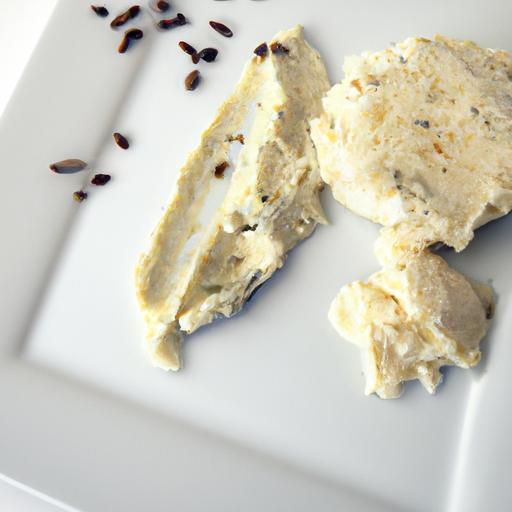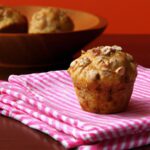In the world of cheese, where tradition meets alchemy, acid-set cheese stands as a fascinating chapter often overshadowed by its aged and cultured cousins. Among these fresh, delicate treasures, ricotta emerges as a creamy marvel-its silky texture and subtle tang concealing a simple yet ingenious process. “Acid-Set Cheese Unveiled: The Magic Behind Ricotta” invites you on a journey into the heart of this beloved Italian delicacy, revealing how a dance of acids and heat transforms humble whey into a luscious cheese. Whether you’re a curious foodie, a culinary adventurer, or simply someone who delights in the stories behind your favorite flavors, prepare to uncover the science and artistry that make ricotta truly enchanting.
Acid-Set Cheese Unveiled brings you into the intimate world of crafting fresh ricotta-a culinary treasure rooted in Italian tradition yet wonderfully accessible in any home kitchen. This creamy, tangy cheese captivates with its delicate texture and subtle flavor, achieved through the fascinating science of acid setting. Whether you are a passionate home cook or a devoted cheese lover, embracing the magic behind ricotta will unlock the secrets to creating your own luscious, fresh cheese that can elevate countless dishes.
Prep and Cook Time
Prep Time: 10 minutes
Cook Time: 30 minutes
Total Time: 40 minutes
Yield
Makes approximately 2 cups of fresh ricotta cheese.
Difficulty Level
Easy to Medium: Perfect for beginners looking to experiment with homemade cheese.
Ingredients
- 4 cups whole milk (not ultra-pasteurized for best results)
- 1 cup heavy cream (for extra creaminess)
- 3 tablespoons lemon juice (freshly squeezed; alternatively white vinegar or citric acid)
- ½ teaspoon salt (adjust to taste)
The Role of Acid in Your Homemade Ricotta
Using an acid to gently set the protein matrix in milk is the cornerstone of ricotta making. The acid lowers the pH of the milk-and-cream blend, causing casein proteins to coagulate and form delicate curds. This method, unlike rennet cheeses, skips the enzymatic coagulation for a speedier, fresher result bursting with tang and luscious mouthfeel. Choosing the perfect acid – whether lemon juice for brightness, vinegar for sharpness, or citric acid for neutral flavor – influences not only texture but also the subtle flavor notes of your ricotta.
Step-by-Step Guide to Craft Your Authentic Ricotta
- Combine the milk and cream: In a large saucepan, pour 4 cups whole milk and 1 cup heavy cream. Heat over medium until the mixture reaches 185°F (85°C), stirring occasionally to prevent scorching.
- Add the acid carefully: Remove the pot from heat and slowly add 3 tablespoons lemon juice while gently stirring. You will see curds start to form within seconds.
- Rest and separate: Let the mixture sit undisturbed for 10 minutes, allowing full curd formation.
- Line a colander: Place a fine-mesh strainer lined with cheesecloth or a clean kitchen towel over a large bowl.
- Ladle the curds: Carefully transfer the curds into the lined strainer to drain. Allow to drain for 20-30 minutes for a soft, creamy texture.
- Season: Transfer the ricotta to a bowl and stir in ½ teaspoon salt. Taste and adjust seasoning as needed.
- Store fresh: Keep your ricotta refrigerated and consume within 3-4 days for optimal flavor and freshness.
Tips for Success: Insider Secrets to Perfect Ricotta
- Milk matters: Fresh, high-quality whole milk yields silkier curds; avoid ultra-pasteurized milk as proteins may not set well.
- Temperature control: Heating milk just below boiling ensures proteins denature properly without bitterness.
- Acid choice: Lemon juice imparts a natural brightness; white vinegar offers sharper tang; citric acid works well for neutral flavor and precise pH control.
- Straining timing: Less draining time yields creamier, wetter ricotta; extend for a firmer result suitable for baking.
- Flavor variations: Add fresh herbs, garlic, or roasted red peppers to customize.
- Make ahead: Fresh ricotta keeps in an airtight container up to 4 days refrigerated. Bring to room temperature before use to revive creaminess.
Serving Suggestions
Elevate your homemade ricotta by serving it drizzled with high-quality extra virgin olive oil, a sprinkle of flaky sea salt, and a dusting of cracked black pepper. Pair with honey and toasted nuts for a sweet contrast, or dollop onto pasta, pizza, or fresh bruschetta. Garnish with vibrant basil leaves, microgreens, or a dusting of fresh ground nutmeg for visual flair and an aromatic punch. The creamy tang of acid-set ricotta transforms simple plates into memorable culinary experiences.

| Nutrient | Amount per ¼ cup (50g) |
|---|---|
| Calories | 100 |
| Protein | 6g |
| Carbohydrates | 2g |
| Fat | 7g |
For deeper insight into the chemistry of acid-set cheeses, visit Exploratorium’s science of curd formation. Explore further how homemade cheese can revolutionize your kitchen on our Homemade Cheese Basics page for other fresh cheese recipes.
Q&A
Q&A: Acid-Set Cheese Unveiled: The Magic Behind Ricotta
Q1: What exactly is acid-set cheese, and how does ricotta fit into this category?
A1: Acid-set cheese is a type of cheese made by curdling milk using acid rather than rennet. Ricotta is a classic example – it’s crafted by introducing an acid (like lemon juice or vinegar) to hot whey or milk, causing the proteins to coagulate and form those delicate, fluffy curds we love. Think of it as a gentle culinary magic trick, turning simple ingredients into creamy goodness.
Q2: How does acid actually ‘set’ the cheese?
A2: Milk proteins, especially casein, normally stay suspended in liquid because of the milk’s natural pH balance. When you add acid, it lowers the pH, disrupting that balance and causing the proteins to clump together or “coagulate.” This coagulation traps fat and water, forming curds that become the cheese. It’s a natural chemistry lesson served on a plate!
Q3: Why is ricotta traditionally made from whey rather than whole milk?
A3: Ricotta-meaning “recooked” in Italian-is traditionally made from the whey left behind after making other cheeses. Whey still contains precious proteins like albumin and globulin, which don’t set during the initial cheese-making. By gently heating and acidifying the whey, these leftover proteins coagulate, giving ricotta its signature light, grainy texture that’s different from denser cheeses made from whole milk.
Q4: What makes ricotta’s texture so unique compared to other cheeses?
A4: Ricotta’s texture is a soft, fine-grained curd, achieved by the specific acid-setting process and the way it’s gently handled during production. Unlike firm cheeses that are pressed and aged, ricotta remains moist and spreadable, almost cloud-like in mouthfeel. This delicate texture makes it wonderfully versatile, perfect for dolloping over pasta, blending into desserts, or savoring fresh.
Q5: Can you make acid-set cheese at home?
A5: Absolutely! Acid-set cheeses like ricotta are surprisingly accessible for home cooks. All you need is milk, an acid such as lemon juice or white vinegar, and a bit of patience. Heat the milk gently, stir in the acid, and watch as curds magically form. Drain through cheesecloth, and voila-fresh homemade ricotta ready to elevate any recipe.
Q6: How does acid-set cheese differ nutritionally from other cheeses?
A6: Since acid-set cheeses like ricotta are often made from whey, they tend to be lower in fat and calories than many rennet-coagulated cheeses. They’re rich in protein but lighter in texture and density. This makes ricotta a nutritious, versatile option for those seeking creamy cheese without the heaviness.
Q7: What’s the secret behind ricotta’s enduring popularity?
A7: Ricotta’s charm lies in its simple ingredients, straightforward process, and stunningly versatile flavor and texture. It’s a canvas for both savory and sweet dishes-from lasagna layers to luscious cheesecakes. Its acid-set magic bridges science and art, embodying centuries of culinary tradition while inviting endless creativity in the kitchen. Truly, ricotta is cheese alchemy at its finest.
Wrapping Up
As the delicate curds of acid-set cheese softly come together, ricotta reveals itself not just as a dairy delight but as a testament to the seamless dance between science and tradition. From humble whey to creamy perfection, this cheese carries the magic of transformation in every spoonful. Whether draped over pasta, folded into desserts, or savored fresh, understanding the gentle art behind ricotta deepens our appreciation for a craft thousands of years in the making. So next time you indulge, remember: there’s a world of chemistry and culture bubbling quietly beneath its tender texture-a true marvel of acid-set cheese unveiled.


